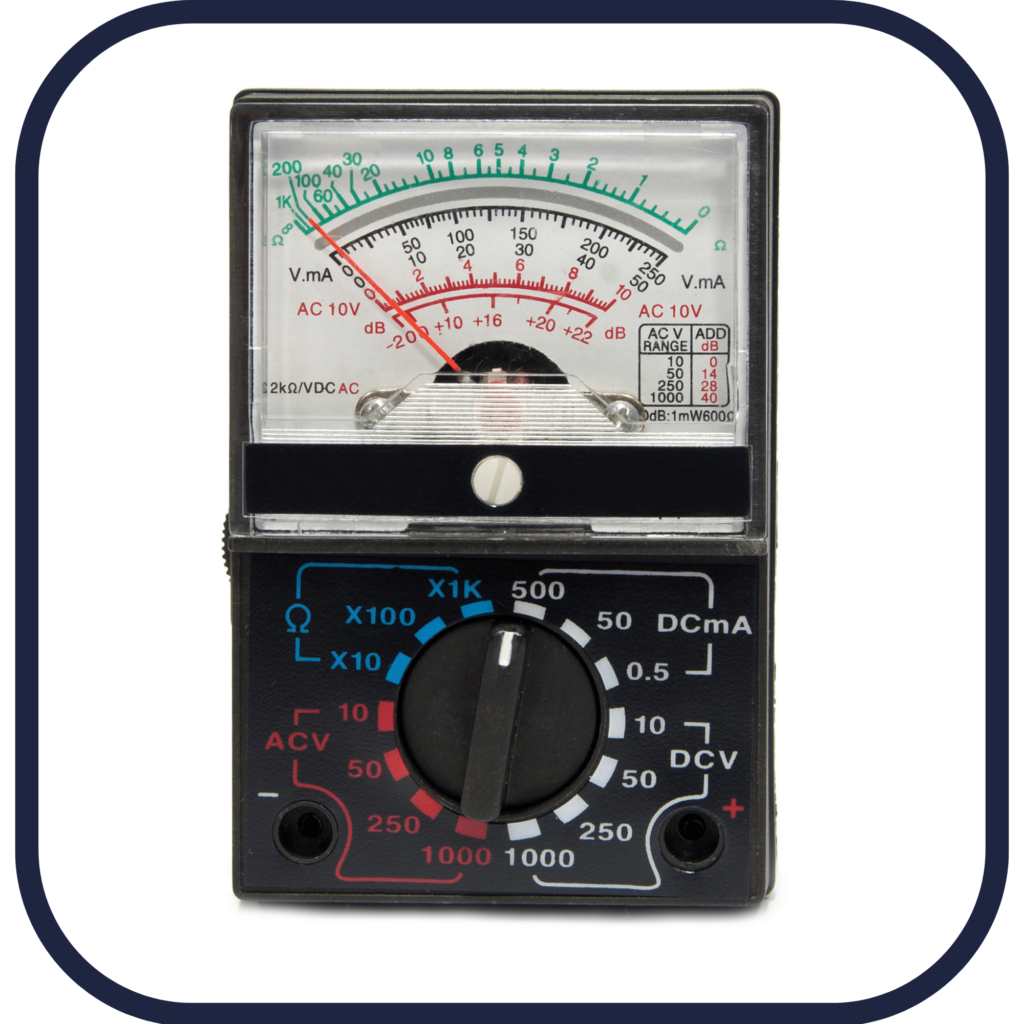30-second summary
Ammeter
An instrument used to measure currents is called an ammeter. To measure the current in a wire, you usually have to break or cut the wire and insert the ammeter so that the current to be measured passes through the meter.
The principle of operation of ammeters is based on the interaction between an electric current and a magnetic field. Ammeters are typically designed as a low-resistance device that is placed in series with the circuit being measured.
Analog and digital ammeters are two types of devices that are used to measure electric current.
Here are three examples of electric currents that can be measured by ammeters:
- Household circuits: The current flowing through a typical household circuit in the United States is 15-20 amperes.
- Automotive circuits: The current flowing through the battery or alternator of a car is typically 50-150 amperes.
- Small electronics: The current flowing through the power supply of a small electronic device, such as a cell phone or laptop, is typically 0.1-1 ampere.

Types of Ammeters
There are several types of ammeters, each with their own unique characteristics and uses. Here are some of the most common types of ammeters:
- Moving Coil Ammeter: Moving coil ammeters are the most common type of analog ammeter. They use a coil of wire that is suspended in a magnetic field, and the current flowing through the coil causes a mechanical deflection of a pointer on a calibrated scale.
- Moving Iron Ammeter: Moving iron ammeters use a piece of ferromagnetic material that moves in response to the magnetic field generated by the current being measured. The movement of the iron piece is transferred to a pointer on a calibrated scale.
- Rectifier Type Ammeter: Rectifier type ammeters are used to measure AC current. They use a diode or other rectifier device to convert the AC current into a DC current that can be measured with a moving coil or moving iron ammeter.
- Digital Ammeter: Digital ammeters use electronic circuitry to convert the current measurement into a digital display. They can be more accurate and precise than analog ammeters, and they are often used in industrial and scientific applications.
- Clamp-on Ammeter: Clamp-on ammeters use a magnetic sensor to measure the magnetic field generated by the current flowing through a wire. They are useful for measuring current in situations where it is not possible to insert an ammeter directly into the circuit.
- Thermal Ammeter: Thermal ammeters use the heat generated by the current flowing through a wire to measure the current. They work by measuring the temperature rise of a conductor when a current flows through it, and are often used in high-current applications.
Analog and Digital Ammeter
Analog and digital ammeters are two types of devices that are used to measure electric current.
Analog ammeters use a moving coil or moving iron mechanism to indicate the magnitude of the current. As the current flows through the ammeter, the mechanical movement of the coil or iron deflects a needle that is mounted on a calibrated scale. The scale is marked with units of current, typically in amperes. Analog ammeters are simple, inexpensive, and are still widely used in many applications. They are also known for their reliability and ruggedness.
Digital ammeters, on the other hand, use electronic circuitry to convert the current measurement into a digital readout. A microprocessor or other digital processing device converts the current signal into a numerical value that is displayed on a digital screen. Digital ammeters are often more accurate and precise than analog ammeters, and they are capable of measuring very small currents. They are also capable of measuring both AC and DC currents.
Difference Between DC and AC Ammeter
The main difference between a DC (direct current) and AC (alternating current) ammeter is in their design and operation. Here are some key differences:
- Sensing mechanism: DC ammeters typically use a moving coil or moving iron mechanism to sense the current, while AC ammeters often use a current transformer (CT). The CT steps down the high current in the circuit to a lower current that can be measured by the ammeter.
- Calibration: DC ammeters are calibrated to measure DC current, while AC ammeters are calibrated to measure AC current. The calibration of the ammeter depends on the waveform of the current being measured. For example, an AC ammeter may be calibrated to measure the RMS (root mean square) value of a sine wave.
- Measurement range: The measurement range of a DC ammeter is usually limited to the maximum DC current that the instrument can handle. AC ammeters, on the other hand, can measure a wide range of AC currents by using different CTs with different ratios.
- Accuracy: DC ammeters are generally more accurate than AC ammeters because the measurement of DC current is not affected by the frequency of the current. AC ammeters may have errors due to phase shifts or harmonic distortion in the current waveform.
- Applications: DC ammeters are commonly used in automotive, marine, and electronics applications, while AC ammeters are commonly used in power systems, electrical distribution, and industrial applications.

